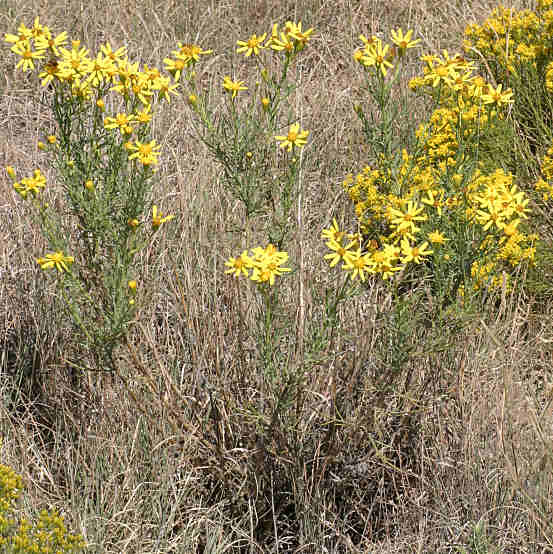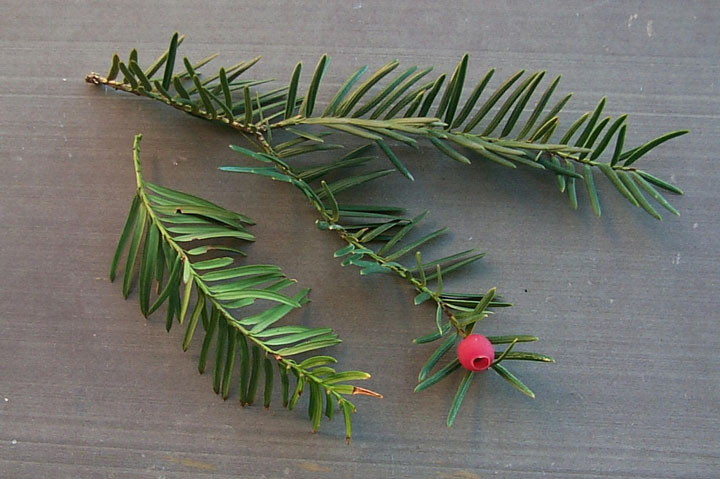
June 2023
Poisonous Plants in a Drought
By Drs. Steve Ensley and Scott Fritz, KSVDL Toxicology Section
Changing your Best Management Practices is key to surviving any adverse condition in agriculture. Knowledge improves the odds in gambling and grazing (Pfister, 2002). The current adverse event in agriculture is an extended and widespread drought in the mid and upper plains. Other areas in the US have had extended, widespread drought but conditions are improving.
Poisonous plants are adapted to grow in adverse conditions. Unfortunately, when we do get rain in an extended drought, even periodic rain, poisonous plants are the first to grow. Widespread and ongoing drought increases the risk of grazing animals consuming poisonous plants because of the lack of growing forage and poisonous plants out compete the natural forages. Animals that are native to a regional area have the ability to select against poisonous plants, but this doesn’t eliminate the risk of grazing. A drought will change the dynamic of native cattle being able to avoid poisonous plants. Being able to adapt and change when you put cattle on grass, how long they are on grass and how you rotate grazing are a few of the management techniques to adapting to extended drought.
 |
| Senecio - pyrrolizidine alkaloids |
Cattle do have learned or inherited behaviors that can help them sort out what plants in their environment are safe to consume. They know the poisonous plants in their area. Cattle have the ability to graze a mixture of forages, including poisonous plants, to minimize the possibility of plant toxicosis. Cattle learn about gazing in their environment by observing their mothers and other cattle in the herd. Social learning in a cow herd does not teach animals to avoid certain foods, it encourages them to try new forages. Cattle have the ability of postingestive feedback. Postingestive feedback involves how their long-term body condition functions and what their toxicological state is when grazing forages that are potentially harmful. This is one of the ways native cattle respond to plant toxin exposure.
Widespread and extended drought decreases the availability of normal forage and changes the availability of the remaining plants that are safe to consume. Drought stress even changes the toxin concentration in plants that are considered poisonous. The toxins that plants contain will also change with a drought. Stressed poisonous plants will change their physiology based on the drought and this will impact the toxins they contain. Drought can change the toxin in the plant. Aversions that cattle develop when grazing poisonous plants are generally dose dependent. Stronger aversions are formed to compounds that create intense illness.
In normal years without drought, doing things like spraying herbicides on pasture can increase palatability of certain poisonous plants making them more palatable to cattle. During a drought using herbicides on pasture can be an even more increased risk.
 |
| Japanese yew |
Availability and water quality of drinking water also changes during a drought. Managing your available surface and ground water during a drought is difficult. Drinking water quantity is always more important than quality but we need to provide the best water quality available. Blue green algae blooms occur more often and are larger during drought. It goes without saying that water availability is key to any pasture situation.
Many of the poisonous plants we deal with in the mid-west like to grow in shaded areas with high soil moisture. Many of these areas are adjacent to the surface water used in the pasture. So, in a drought, wet areas around the ponds and shady wet areas may be an increased risk.
Poisonous plants may increase in toxicity depending on where they are growing in the pasture. Change in soil type will affect toxicity of a plant. One location in a pasture may be more problematic than another. Even though you have used this pasture for years without problems, every year is a different year.
Management of poisonous plants in a pasture is easier when the plant toxin is known so strategies can be developed to work around the seasonal patterns of the poison plant. In the case of reproductive effects of poisonous plants there are usually certain physiological stages that can be managed that would decrease the possibility of reproductive effects. Lupine will cause reproductive effects in cattle between the 40th and 70th day of pregnancy. In sheep, Veratrum californicum can cause cyclopia when fed at the 14 day of pregnancy and when fed at 27-32 days of pregnancy will cause limb abnormalities. Larkspur can be grazed for the first 4-6 weeks of pasture then the risk increases. Postingestive feedback, not flavor, regulates larkspur intake. Most cattle acquire a preference for pine needles, even if they initially refuse to eat fresh green needles. Because cattle learn to like pine needles, producers with serious losses should also consider changing calving dates from spring to fall, thereby moving late-gestation to summer when cattle are less likely to eat pine needles.
Developing a plan on how to handle long term drought is the key to surviving. Death loss is the direct result of poor management or management errors. A limited number of poisonous plants can even be used as nutritious. forage. In 1997 in Adams County, Washington, more than 4000 calves, or 30% of the population, were born with lupine-induced birth defects. This death loss scenario might be replayed with other toxic plants as experienced range managers and livestock producers are replaced by less-experienced personnel, and as ranches are subdivided or managed by proxy from afar. Techniques to screen and cull livestock that are susceptible to a specific plant toxin may be practical in the future. Further, genetic heritability may allow producers to breed livestock that are less susceptible to various plant toxicoses.